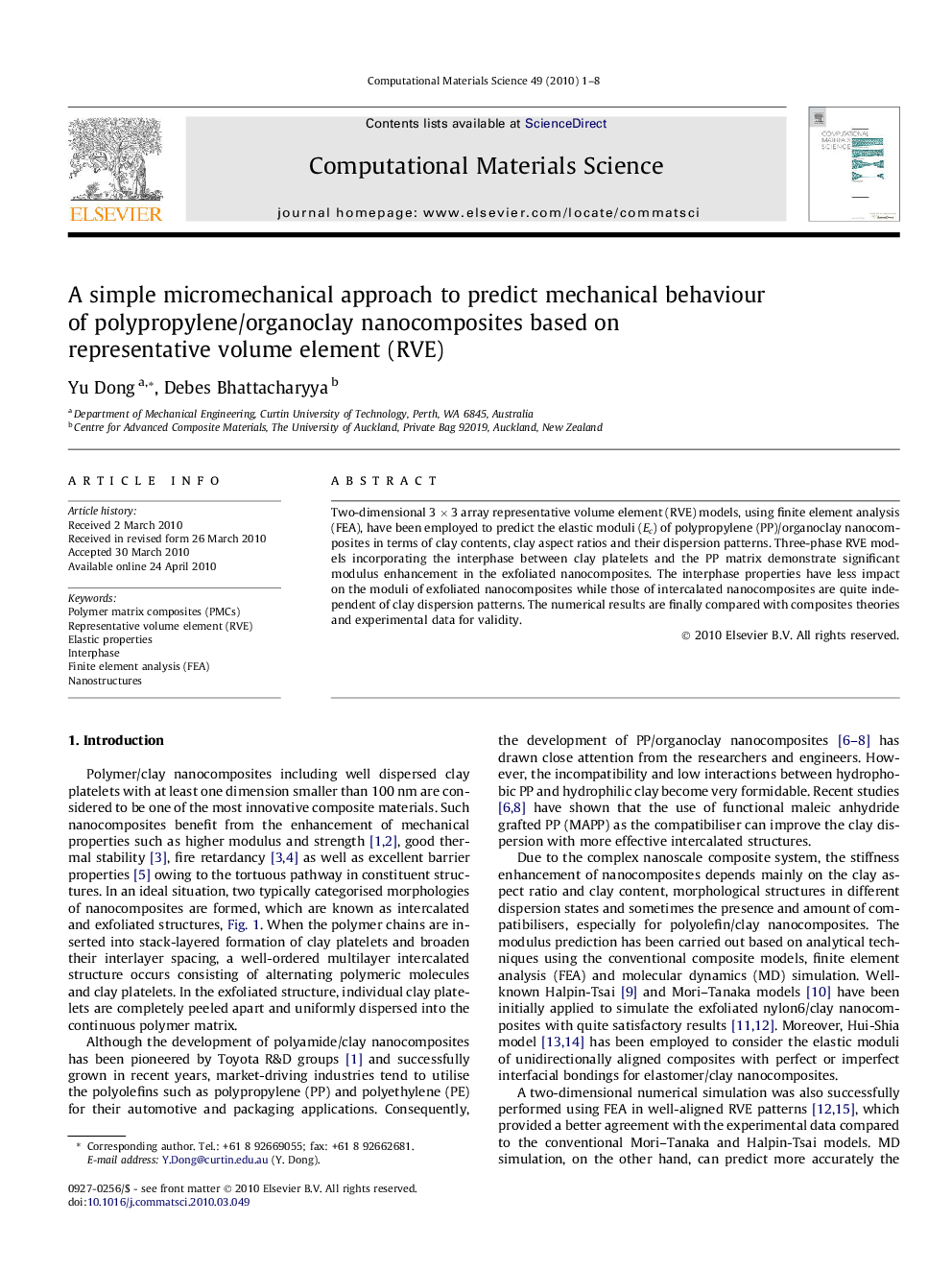| Article ID | Journal | Published Year | Pages | File Type |
|---|---|---|---|---|
| 1562678 | Computational Materials Science | 2010 | 8 Pages |
Abstract
Two-dimensional 3 × 3 array representative volume element (RVE) models, using finite element analysis (FEA), have been employed to predict the elastic moduli (Ec) of polypropylene (PP)/organoclay nanocomposites in terms of clay contents, clay aspect ratios and their dispersion patterns. Three-phase RVE models incorporating the interphase between clay platelets and the PP matrix demonstrate significant modulus enhancement in the exfoliated nanocomposites. The interphase properties have less impact on the moduli of exfoliated nanocomposites while those of intercalated nanocomposites are quite independent of clay dispersion patterns. The numerical results are finally compared with composites theories and experimental data for validity.
Keywords
Related Topics
Physical Sciences and Engineering
Engineering
Computational Mechanics
Authors
Yu Dong, Debes Bhattacharyya,
